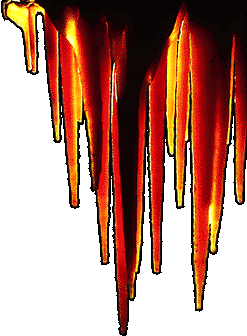

 DeKalb, IL
DeKalb, IL

CAVE EXPLORING
Guide to Safe Scouting;
CAVING
General Policy
Caving can be a hazardous activity when the proper equipment, skills, and judgment are not used. Trips that are led by adults inexperienced in caving and trips containing large numbers of persons compound the hazards already inherent in the activity and create a potentially dangerous situation.
1.
2.
3.
Note: Caving trips have been incorporated in the BSA "Policy on Use of Wilderness Areas by Personnel of the BSA," with a cross reference to these guidelines. Copies of the wilderness area policy statement are available from High Adventure Programs, Boy Scouts of America, 1325 West Walnut Hill Lane, Irving, Texas 75015-2079.
4.
5.
6.
Cave Safety
7.
The leaders must thoroughly comprehend that overwhelming difficulties may easily result from the problems of fatigue, improper or faulty equipment, emotional problems, physical limitations, or excessive eagerness or exuberance in members of the group. Additionally, they must realize that all of these individual problems are often interrelated and that the occurrence of any one of them can easily create a situation that will lead to or accentuate any or all of the others.
The leaders must constantly remember that any obstacle overcome on the way into the cave will also have to be overcome on the way out, when the group is tired, when the initial enthusiasm of some of the group may have decreased, and when their alertness and physical abilities, as well of those of their group, is at the lowest.
The leaders must have adequate first aid training and ability, and a comprehensive knowledge of the practices to follow in the event of an accident.
The leaders must keep their group together at all times.
8.
The equipment and spares must never be makeshift or of questionable dependability. The highest standards developed by experienced cavers are to be met in all categories of equipment.
The use and repair of each item must be understood and demonstrated by all of the party before entering the cave.
Under no conditions should any member of the group be permitted to enter the cave if they do not have all of the required equipment in their possession. The sharing of any equipment, such as lights, between individuals must be prohibited.
9.
10.
11.
12.
14.
15.
16.
Resource: Caving, No. 19-102B
All caving, other than simple novice activities, should be limited to adults and young people 14 and older—members of Venturing crews and older Scouts in troops, and teams. "Simple novice activities" means commercially operated cave excursions.
Units (teams, troops, crews) that include cave visits in their program, whether for one trip or many, must adhere to the two-deep leadership policy of the Boy Scouts of America (two registered adult leaders, or one adult and a parent of a youth member, one of whom must be 21 or older). These leaders must be responsible, mature adults who are constantly present with the group. One cave trip leader must be highly qualified through caving experience and must be thoroughly versed in all established safety practices, conservation measures, and courtesy to cave owners.
In conformity with the BSA policy on the use of wilderness areas, all caving groups should be limited to 8 to 10 persons and two-deep leadership as required by the Boy Scouts of America for all trips or outings. Caving activities for larger groups should not be conducted. Each group should be organized to function independently, i.e., plan its own trips on different dates, provide its own transportation and food, and function as a separate and distinct group. The only exception to these rules may be trips to certain commercial caves where special provisions are made to furnish proper supervision by professional guides.
Any Venturing crew wishing to learn about cave rescue work or pursue that activity as a specialty must do so under the sponsorship and supervision of an adult cave rescue group affiliated with the National Speleological Society.
All Scout groups are required to have an approved tour permit for trips of all kinds. Cave activities are included under that plan. National tour permits are required for a trip of 500 miles or more; local permits are issued to cover shorter trips.
The leaders and the individual members of the group must understand these basic practices and policies of caving, which are approved by the Boy Scouts of America and the National Speleological Society. In addition to understanding these tenets, every participant in a caving trip must agree, without reservation, to follow all of the specific guidelines contained in BSA's Caving publication, No. 19-102A.
Any cave trip must include a fully qualified leader or adult assistants qualified to handle all problems that might arise. These leaders should have had experience as active participants in a competent caving group. They must realistically evaluate their own knowledge and experience and must never attempt to lead their group into a situation that is beyond their capability or the capability of any member of the group. The overall capability and pace of a caving group is always that of the least able member of that group, and no member of the group should ever be encouraged or permitted to attempt a potentially dangerous act that is beyond their ability solely because the remainder of the group has the necessary ability.
All basic equipment such as clothing, shoes, lights, and spare parts for the lights, hard hats, and food should be appropriate for the cave being visited. It is the responsibility of the leader to ensure that all equipment is adequate and in good condition.
Except for groups composed entirely of experienced cavers, the cave to be visited must not require the use of ropes, ladders, or other climbing devices. The safe use of these aids requires extensive initial training and practice under controlled conditions above ground, never in a cave.
Natural and fabricated hazards such as mud slopes, loose rocks, pits, deep water, complex routes, old ropes, wooden ladders, and the possibility of flooding are all dangers to some degree and must be approached with care and judgment. If it appears that an accident may still occur in spite of preventive measures, that area must be avoided entirely.
The strength, endurance, and specific abilities of every member of the group must be evaluated in advance and nothing attempted that exceeds anyone's limitations. Climbing, crawling, and route finding are not necessarily inborn skills, and should be taught and tested before a cave trip is undertaken.
Not only the leaders, but every person on a cave trip should be aware of the necessity to constantly observe the whereabouts and potential problems of other members of the group and be ready to provide any assistance necessary.
Running, jumping, horseplay, and solo exploration must be prohibited—such foolhardy actions jeopardize not only the individual but also the entire group.
Caves are often cold and damp, and hypothermia is a danger, especially on long trips or trips requiring wading or crawling in water. Try to dress for conditions to be met, stay as dry as possible. Leave the cave immediately if any member of the group shows signs of hypothermia such as uncontrollable shivering, slurred speech, or loss of coordination.
Specific information about the caving trip must be left with a responsible person back home at time of departure. This should include location and length of time of trip, expected time of return, list of participants, and whom to contact for each trip member in case of emergency.
A record of every cave trip will provide valuable assistance to new leaders and cavers alike. Full records of all caving accidents will provide the basis for a guide to the development of a safe caving program. A complete report of any accident, regardless of severity, should be sent to the Safety Committee of the National Speleological Society, Cave Avenue, Huntsville, AL 35810. Serious accidents should also be reported to the director of Health and Safety Service of the Boy Scouts of America.




ALABAMA
Desoto Caverns
Rickwood Caverns State Park
Russell Cave National Monument
ARKANSAS
Blanchard Springs Cave
CALIFORNIA
Black Chasm
Boyden Cavern
California Caverns
Lake Shasta Cave
Moaning Cave
COLORADO
Cave of the Winds
FLORIDA
Florida Caverns State Park
ILLINOIS
Illinois Caverns
INDIANA
Bluesprings Caverns
Buddha Cave
Marengo Cave
Squire Boone Cave
Stonington Caverns
Sullivan Cave
Twin Cave & Donaldson Cave
Wyandotte Cave
IOWA
Maquoketa Caves State Park
KENTUCKY
Carter Caves State Park
Cub Run Cave
Hidden River Cave
Lost River Cave
Crystal Onyx Cave
Diamond Caverns Cave
Kentucky Caverns
Mammoth Cave
Onyx Cave
MINNESOTA
Mystery Cave
Niagara Cave
MISSOURI
Bluff Dwellers Cave
Bridal Cave
Cathedral Cave
Devil's Ice Box
Fisher Cave
Meramec Caverns
Mystic Caverns
Onondaga Cave
Ozark Caverns
Talking Rocks Cave
MONTANA
Lewis & Clark Caverns State Park
NEW MEXICO
Carlsbad Caverns
Timpanogos Cave National Monument
NEW YORK
Howe Caverns
NEVADA
Lehman Cave
OHIO
Indian Caverns
Ohio Caverns
Olentangy Indian Caverns
OREGON
Oregon Caves National Park
Sea Lion Caves
PENNSYLVANIA
Indian Caverns
Laurel Caverns
SOUTH DAKOTA
Beautiful Rushmore Cave
Black Hills Caverns
Jewel Cave National Monument
Wind Cave National Park
TENNESSEE
Bristol Caverns
Cumberland Caverns
Dunbar Cave State Park
Ruby Falls Cavern
TEXAS
Inner Space Cavern
Longhorn Cavern State Park
Natural Bridge Caverns
VIRGINIA
Luray Caverns
WEST VIRGINIA
Lost World Caverns
Seneca Caverns
WISCONSIN
Cave of the Mounds
Crystal Cave
Eagle Cave
American Cave Conservation Association

OTHER LINKS



2009
2008
2007
2006
2005
2004
2002
2001
2000
1999
1998
1996
1995
1994
1993
1992
1989
1988
1981
1980
1977

 Caving Links
Caving Links


To Return Home


This page has been visited
times since January 4, 2000.